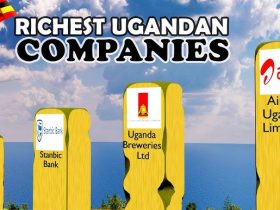
Cameroon’s main businesses
Cameroon’s economy is characterized by a diverse array of industries, with its key sectors being agriculture, oil and gas, mining, and manufacturing. As one of the largest economies in Central Africa, Cameroon has a wide range of businesses, many of which are heavily reliant on the country’s natural resources. Let’s explore some of the main industries that drive Cameroon’s economy.
### 1. **Agriculture**
Agriculture is the backbone of Cameroon’s economy, employing around 70% of the population and contributing significantly to its GDP. The country’s rich, fertile soil and favorable climate allow for the production of various crops. Some of the most important agricultural products include **cocoa**, **coffee**, **cotton**, **bananas**, **rubber**, and **palm oil**. Cocoa and coffee, in particular, are significant export crops, with Cameroon ranking as one of the top producers of cocoa in Africa. Major agricultural businesses include both smallholder farms and large-scale agribusinesses that produce crops for both domestic consumption and export.
### 2. **Oil and Gas**
The oil and gas industry is a cornerstone of Cameroon’s economy, accounting for a significant portion of government revenue and export earnings. The country is an oil producer, with crude oil being one of its main export commodities. Major players in the sector include **SNH (Société Nationale des Hydrocarbures)**, the state oil company, along with international firms like **Perenco** and **Addax Petroleum**. These companies engage in exploration, production, and export of oil, while a nascent gas industry has also emerged, driven by liquefied natural gas (LNG) production. Although fluctuating oil prices have affected the sector’s performance, it remains critical to the country’s economic growth.
### 3. **Mining**
Cameroon has a wealth of mineral resources, although the mining sector remains underdeveloped compared to its potential. **Bauxite**, **iron ore**, **gold**, and **diamonds** are some of the minerals found in the country. Companies like **Canyon Resources** are involved in the exploration and development of mineral resources, with a focus on large-scale bauxite mining projects. Cameroon’s government has been working on creating a more attractive legal and regulatory environment for foreign investors in the mining sector, aiming to increase the sector’s contribution to economic development.
### 4. **Forestry**
The forestry sector is another key part of Cameroon’s economy, owing to the country’s vast rainforests. Timber is a major export commodity, and logging companies like **Pallisco** and **SEFAC** operate in the sector, adhering to sustainable forestry management practices due to global concerns about deforestation. Cameroonian timber is exported to markets in Europe, Asia, and North America.
### 5. **Manufacturing and Industry**
Cameroon’s manufacturing sector is developing steadily, with a focus on food processing, beverages, textiles, and cement production. The food and beverage sector is particularly robust, with companies like **SABC (Société Anonyme des Brasseries du Cameroun)** and **Dangote Cement** playing significant roles. The government is promoting industrialization through initiatives aimed at adding value to raw materials like cocoa and cotton. While industrial development has been slow, there is potential for growth, especially in agro-processing and light manufacturing.
### 6. **Telecommunications and Banking**
The telecommunications and banking sectors have seen rapid growth over the last few decades. Leading telecommunications companies such as **MTN Cameroon**, **Orange Cameroon**, and **Nexttel** provide mobile and internet services across the country, contributing to digital inclusion and business connectivity. In the financial sector, banks like **Afriland First Bank**, **UBA (United Bank for Africa)**, and **Société Générale Cameroon** play key roles in providing banking services to individuals and businesses. Microfinance institutions are also important, particularly in rural areas where access to traditional banking services is limited.
### 7. **Tourism**
While tourism remains an underdeveloped sector, it has significant potential given Cameroon’s rich cultural diversity, national parks, and wildlife reserves. The country’s unique blend of coastal beaches, mountains, and rainforests could attract more international tourists if infrastructure and marketing are improved. Businesses related to ecotourism and cultural tourism have begun to emerge, with the government investing in promoting the sector.
### Conclusion
Cameroon’s main businesses are diverse, spanning from natural resource extraction to manufacturing and services. Agriculture, oil, mining, and forestry remain the core pillars of the economy, but there is a growing focus on developing industries like manufacturing, telecommunications, and tourism. While challenges such as infrastructure deficits, regulatory hurdles, and fluctuating commodity prices remain, the government is working toward diversifying the economy and attracting more investment across sectors. The ongoing efforts to industrialize and modernize key industries point toward a more prosperous future for Cameroon’s business landscape.



Leave a Reply